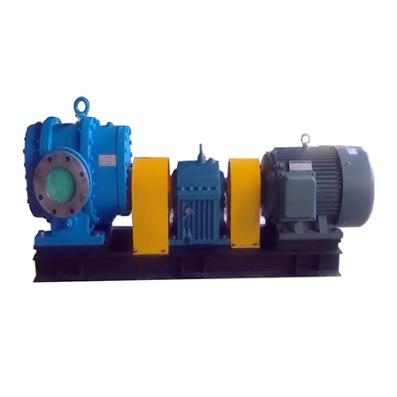Cam Rotor Pump, because of its hygienic type, low speed (200-600rpm), and low shear force to the medium (material), is widely used in equipment in the biopharmaceutical industry, especially for biologically active media (materials). ) treatment equipment, such as ultrafiltration equipment.
The pump head parts of the medical and sanitary Cam Rotor Pump in contact with the medium are all composed of 316L stainless steel rotor, pump casing, pump shaft, connecting pipe, silicon carbide mechanical seal, EPDM rubber sealing ring, and other materials. Due to the characteristics of its material, proper operation and maintenance are required in daily use to ensure its performance and longevity. Next, the rotor pump manufacturer Chenyangpump will introduce you one by one.
Before introducing the operation and maintenance of the Cam Rotor Pump, Chenyangpump will first introduce the basic information about the Cam Rotor Pump.
Introduction to Cam Rotor Pump
A Cam Rotor Pump is a positive displacement pump with two oppositely rotating rotors mounted on parallel synchronous gear shafts. A small cavity is formed between the rotors and the pump casing, and the medium (material) filled in the cavity is continuously rotated by the rotor. Push from the inlet end to the outlet end. In this way, the medium (material) is continuously transported by the Cam Rotor Pump.

Correct operation of Cam Rotor Pump:
1. The Cam Rotor Pump can only be started when the pump cavity is filled with liquid material (do not run dry), because the mechanical seal of the pump body mainly relies on materials to lubricate and cool down. It is generally recommended that the output pressure should reach more than 0.5 bar after startup to ensure that the end face of the mechanical seal can be fully lubricated.
2. The medium (material) entering the Cam Rotor Pump must be pre-filtered at least 75-100um to avoid damage to the rotor and pump casing by hard particles.
3. Before starting the Cam Rotor Pump, the valves of the inlet and outlet pipes must be opened. If you forget to open the outlet valve, it will inevitably cause the internal pressure of the pump body to rise, the motor will be blocked, and the motor will be burned out.
4. When the machine is stopped, the Cam Rotor Pump should be stopped first, and then the inlet and outlet valves should be closed.
Maintenance of Cam Rotor Pump:
1. Regularly check the position and quality of the gearbox lubricating oil, and maintain a good lubricating state to prolong the life of Cam Rotor Pump gears and bearings. It is generally recommended that 50% of the oil hole window is better. It is recommended that the Cam Rotor Pump be replaced every year or after 3000 hours of operation.
2. Check the running status of the Cam Rotor Pump every day. If abnormal sound and vibration are found, or the temperature rise is too high, it should be stopped for inspection.
3. When the Cam Rotor Pump motor stops due to fault protection, it should be powered off for inspection. Open the pump cavity cover, if there are scratches between the cams and the cavity wall, first check the clearance.
4. When there are deep scratches on the surface of the cam and the cavity wall, the cam, and the seal should be removed, the surface of the cam should be polished and the flatness of the side surface should be checked, and the scratches on the inner wall of the Cam Rotor Pump cavity should be smoothed.
5. When assembling the Cam Rotor Pump, pay attention to adjusting the position of the mechanical seal moving ring and check the clearance between the cam and the side wall of the cavity.
6. After the pump is assembled, turn it manually first. If the resistance is large or the card is issued, it should be reinstalled.
7. When assembling the pump body and the gearbox, the coaxiality of the coupling must be corrected.
The above is the entire content of the operation and maintenance of the Cam Rotor Pump brought to you today by Cam Rotor Pump manufacturer Chenyangpump. I hope that the above content can help you better use the Cam Rotor Pump. For more information on the rotor pump, please click below:
What is a Rotor pump? What kinds are there?